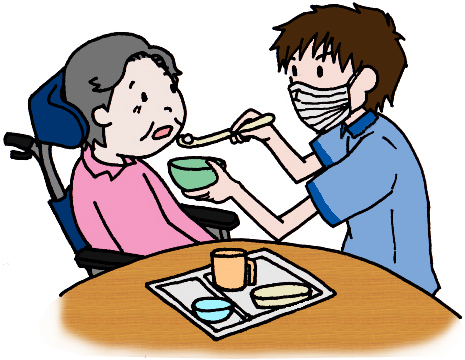The original article is in Japanese. Depending on your region, some parts may feel unfamiliar. Please use it as a reference only.
Nursing Care Plan: Difficulty in Expectoration (Ineffective Airway Clearance), Pneumonia Risk, and Choking Risk
Thank you for reading. This time, we will discuss interventions for individuals who have difficulty expectorating sputum. The inability to clear sputum has various causes. For example, insufficient fluid intake can result in thick, difficult-to-expectorate sputum. Alternatively, allergic reactions may lead to continuous production of clear nasal discharge and sputum, making it difficult to clear completely. This care plan also applies to individuals who are unable to expectorate due to recent surgery, sedation, or neurological disorders affecting their ability to cough effectively.
By identifying the underlying causes, we can learn how to address each case and maintain effective airway clearance.
Jump to Section
1. Patients Eligible for the Nursing Care Plan “Ineffective Airway Clearance”
- Smokers (chronic airway inflammation increases sputum production)
- Respiratory diseases (increased sputum production):
- COPD (inflammation of the airways due to smoking increases secretions)
- Respiratory infections (inflammation in the nasal cavity, sinuses, trachea, bronchi, and alveoli increases sputum production)
- Bronchitis, pneumonia, pulmonary edema, sinusitis
- Bronchiectasis (chronic inflammation → difficulty in expectorating sputum → airway and alveolar damage → bronchiectasis; large amounts of sputum, sometimes with blood)
- Pulmonary tuberculosis (growth of tuberculosis bacteria in the lung apex and swelling of hilar lymph nodes; sputum production and, in cavitary lesions, hemoptysis) Negative pressure room management required until isolation is lifted per physician’s orders (airborne transmission risk); N95 masks required for contact.
- Lung cancer (increased sputum production)
- Ventilator-dependent patients (ventilator-associated pneumonia, VAP)
- Tracheostomy (increased risk of pathogen entry into the lungs)
- Patients who cannot or have difficulty expectorating:
- Dementia
- Neuromuscular diseases (ALS, Parkinson’s disease, muscular dystrophy)
- Patients under sedation
- Patients prone to swallowing dysfunction:
- Post-stroke patients (paralysis, absence of cough reflex due to medullary impairment)
- Bronchial asthma (chronic airway inflammation; minimal sputum production)
- Allergic conditions (e.g., hay fever)
- Environmental factors triggering allergies:
- Cold air (temperature change allergy), pollen, house dust, pet dander (dogs, cats), birds
- Factors that cause thick sputum:
- Dry air (enhances viral activity)
- Fluid imbalance: diarrhea, vomiting
- Low fluid intake
- Factors that increase pneumonia risk (pneumonia = lung inflammation = increased sputum production):
- Poor oral hygiene
- Mouth breathing
- Swallowing dysfunction (aspiration risk = pneumonia risk)
- Ventilator dependency
- Suctioning procedures
2. Nursing Goals
Goals are written with the patient as the subject.
- Maintain oral hygiene through mouth care.
- Achieve self-expectoration.
- Remove airway secretions to prevent obstruction and pneumonia.
- Prevent aspiration pneumonia.
- (For bronchial asthma) Prevent airway obstruction by adhering to inhaled and oral medication regimens.
- Maintain appropriate fluid intake.
- Maintain appropriate room temperature and humidity.
3. Nursing Care Plan
1) Observation Plan (OP)
Respiratory system monitoring:
- Respiratory rate
- Respiratory rhythm
- Breath sounds (air entry, lateral differences), lung sounds
- Dyspnea, orthopnea, pursed-lip breathing, paradoxical breathing
- Oxygen therapy levels, consciousness levels, delirium
- SPO2 ≤ 90%
- Blood gas analysis (PaO2 ≤ 90 Torr)
- Imaging findings (lung opacities)
- Blood tests (WBC, procalcitonin, CRP, neutrophils for inflammation response)
- Cyanosis
- Retained pharyngeal sputum sounds
- Coughing
- Sputum characteristics (amount, color, odor)
Signs of choking:
- Choking sign
Signs of infection:
- Fever (≥1°C above baseline body temperature)
- Vital sign abnormalities: tachycardia, tachypnea, SPO2 decrease, fever
- Altered consciousness levels
- Increased sputum volume, abnormal sputum characteristics (odor, yellow or green color)
Aspiration risk during meals:
- Enteral nutrition: route, menu, physician’s orders
- Food texture suitable for swallowing ability
- Swallowing function assessment, VF (videofluoroscopy), VT (videofiber endoscopy)
- Posture during meals and enteral feeding
- Bite size during meals
- Feeding techniques (caregiver’s method)
- Cognitive decline (e.g., unrecognized food, prolonged oral retention without swallowing)
- Pica behavior (e.g., dementia patients eating tissues)
Oral hygiene:
- Mouth care techniques and frequency
Treatment-related observations:
- Sedative (anesthetic) use (autonomic system impact reduces airway clearance ability)
- Continuous analgesic use (autonomic system impact reduces airway clearance ability)
- Tracheostomy, permanent tracheostoma, mini-trach
- Ventilator use
- Suctioning procedures
- Opioid use (dose-dependent consciousness decline)
2) Treatment Plan (TP)
- Create an environment that reduces sputum production (including infection prevention):
- Maintain appropriate temperature and humidity
- Keep surroundings clean and dust-free
- Ensure regular ventilation
- Modify sputum consistency for easier expectoration:
- Maintain adequate hydration
- Monitor fluid balance; if fluid loss (e.g., dehydration, vomiting) is significant, report to a physician
- Administer nebulization per physician’s orders
- Perform mouth care to maintain oral moisture
- Encourage gargling
3) Education Plan (EP)
- For patients with dysphagia:
- Explain the necessity of food texture modifications (many patients dislike chopped, thickened, or mousse-based food)
- Instruct patients to chew thoroughly, swallow before taking another bite
- Teach swallowing exercises (neck, shoulder, tongue, mouth exercises) and salivary gland massage
- (For hospitalized patients) Advise immediate nurse call if experiencing respiratory distress or changes
- Explain basic infection control measures (masks, hand hygiene, ventilation, avoiding crowded spaces)
- (For asthma and allergies) Emphasize continuing inhaler and medication use without self-discontinuation
- Explain home medical management post-discharge (oxygen therapy, suctioning, medication adherence, infection control)
Thank you for reading until the end. Related topics include “Aspiration Risk” and “Infection Risk.” Please refer to the linked articles for additional information.

